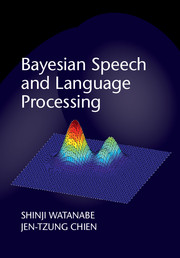Refine search
Actions for selected content:
3326 results in Artificial Intelligence and Natural Language Processing
4 - Practical Reasoning in Arguments and Explanations
-
- Book:
- Goal-based Reasoning for Argumentation
- Published online:
- 05 November 2015
- Print publication:
- 25 August 2015, pp 98-121
-
- Chapter
- Export citation
1 - Introduction to Practical Reasoning
-
- Book:
- Goal-based Reasoning for Argumentation
- Published online:
- 05 November 2015
- Print publication:
- 25 August 2015, pp 1-37
-
- Chapter
- Export citation
7 - Goal-Based Argumentation in Different Types of Dialogue
-
- Book:
- Goal-based Reasoning for Argumentation
- Published online:
- 05 November 2015
- Print publication:
- 25 August 2015, pp 195-233
-
- Chapter
- Export citation
6 - Practical Argumentation in Deliberation Dialogue
-
- Book:
- Goal-based Reasoning for Argumentation
- Published online:
- 05 November 2015
- Print publication:
- 25 August 2015, pp 148-194
-
- Chapter
- Export citation
5 - Explanations, Motives, and Intentions
-
- Book:
- Goal-based Reasoning for Argumentation
- Published online:
- 05 November 2015
- Print publication:
- 25 August 2015, pp 122-147
-
- Chapter
- Export citation
Bibliography
-
- Book:
- Goal-based Reasoning for Argumentation
- Published online:
- 05 November 2015
- Print publication:
- 25 August 2015, pp 275-284
-
- Chapter
- Export citation
Frontmatter
-
- Book:
- Goal-based Reasoning for Argumentation
- Published online:
- 05 November 2015
- Print publication:
- 25 August 2015, pp i-iv
-
- Chapter
- Export citation
Contents
-
- Book:
- Goal-based Reasoning for Argumentation
- Published online:
- 05 November 2015
- Print publication:
- 25 August 2015, pp vii-x
-
- Chapter
- Export citation
Index
-
- Book:
- Goal-based Reasoning for Argumentation
- Published online:
- 05 November 2015
- Print publication:
- 25 August 2015, pp 285-292
-
- Chapter
- Export citation
Acknowledgments
-
- Book:
- Goal-based Reasoning for Argumentation
- Published online:
- 05 November 2015
- Print publication:
- 25 August 2015, pp xi-xii
-
- Chapter
- Export citation
Dedication
-
- Book:
- Goal-based Reasoning for Argumentation
- Published online:
- 05 November 2015
- Print publication:
- 25 August 2015, pp v-vi
-
- Chapter
- Export citation
A method based on rules and machine learning for logic form identification in Spanish†
-
- Journal:
- Natural Language Engineering / Volume 23 / Issue 1 / January 2017
- Published online by Cambridge University Press:
- 24 August 2015, pp. 131-153
-
- Article
- Export citation
Sparsity and normalization in word similarity systems
-
- Journal:
- Natural Language Engineering / Volume 22 / Issue 3 / May 2016
- Published online by Cambridge University Press:
- 19 August 2015, pp. 351-395
-
- Article
- Export citation
Data-driven deep-syntactic dependency parsing†
-
- Journal:
- Natural Language Engineering / Volume 22 / Issue 6 / November 2016
- Published online by Cambridge University Press:
- 18 August 2015, pp. 939-974
-
- Article
-
- You have access
- HTML
- Export citation
Silhouette + attraction: A simple and effective method for text clustering†
-
- Journal:
- Natural Language Engineering / Volume 22 / Issue 5 / September 2016
- Published online by Cambridge University Press:
- 14 August 2015, pp. 687-726
-
- Article
- Export citation

Bayesian Speech and Language Processing
-
- Published online:
- 05 August 2015
- Print publication:
- 15 July 2015
Modernising historical Slovene words
-
- Journal:
- Natural Language Engineering / Volume 22 / Issue 6 / November 2016
- Published online by Cambridge University Press:
- 03 August 2015, pp. 881-905
-
- Article
- Export citation
NLP meets the cloud
-
- Journal:
- Natural Language Engineering / Volume 21 / Issue 4 / August 2015
- Published online by Cambridge University Press:
- 22 July 2015, pp. 653-659
-
- Article
-
- You have access
- Open access
- HTML
- Export citation
Revisiting the ontologising of semantic relation arguments in wordnet synsets
-
- Journal:
- Natural Language Engineering / Volume 22 / Issue 6 / November 2016
- Published online by Cambridge University Press:
- 22 July 2015, pp. 819-848
-
- Article
- Export citation
NLE volume 21 issue 4 Cover and Back matter
-
- Journal:
- Natural Language Engineering / Volume 21 / Issue 4 / August 2015
- Published online by Cambridge University Press:
- 22 July 2015, pp. b1-b6
-
- Article
-
- You have access
- Export citation
